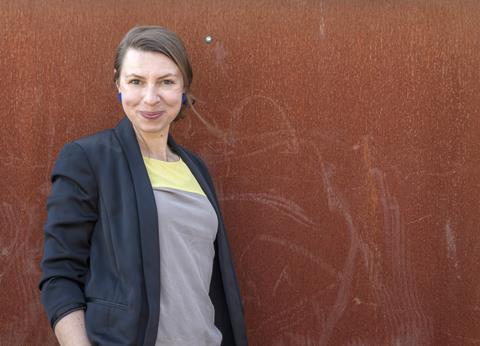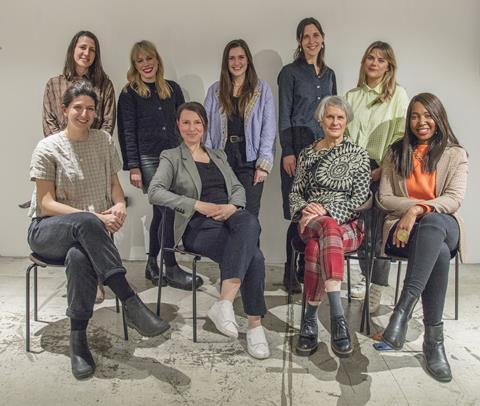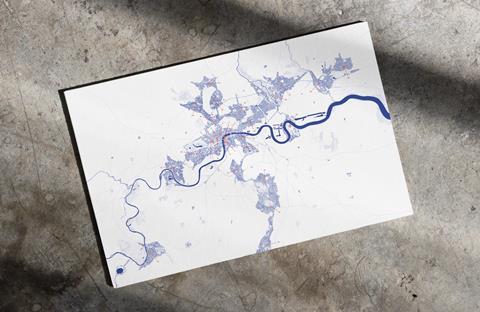Men need to be more than passive bystanders in the struggle for workplace equity, writes Zoë Berman

When we programmed an event on International Women’s Day to launch Part W’s latest initiative, Women’s Work: London, we hadn’t expected the event to be quite so extraordinarily popular with women - and so unpopular with men. The day before the launch, we were replying to one message after another explaining we truly were sold out of spaces for our evening gathering, held in the expansive downstairs of the Department Store, Brixton.
The event showcased our latest project, a London map which draws attention to how women in design, architecture and placemaking are consistently overlooked in writing, publications and mapping projects. We raced to expand capacity, sold 200 seats and still there was a clamour to attend, with guests eager to listen to a panel discussion and get their hands on the first edition copies of the printed map that we had worked on for over a year.
Critic and curator Laura Mark was one of our invited judges who last autumn reviewed and selected from over 150 submissions for our Women’s Work: London study, alongside urban designer and architect Stephanie Edwards. They joined Part W founding members Alice Brownfield and Sarah Wigglesworth OBE in a panel discussion. Issues covered included the challenge of developing feminist methods of mapping, the problematic notion of there being sole authors in architecture and how we approached developing the selection criteria for recording project types that take into account the particular needs of women.
We could count on one hand the number of men who bought a ticket to attend the event. Landscape architect Will Sandy later noted on social media, “Amazing turn out for the Women’s Work launch! But seriously ‘guys’ where are you all?”

Will’s comment surmised a huge problem that we face in the drive for gender equity in the sector. Whilst there is an appetite amongst women to attend our events, join in discussions about the issues women face and participate in calling for change, men aren’t showing up.
It is a painful paradox that women continue to face multiple barriers within architecture and associated professions - and at the same time those who identity as female, Black women, women of colour, members of the LGBTQ+ community and women who have diverse religious beliefs carry the majority burden of making positive change. Women face many hurdles in the sector - from day to day sexism to structural systems that discount our work, our contributions and our knowledge.
Research shows women’s careers are hampered on a range of fronts: the widely recorded gender pay gap, a pattern of women being overlooked for promotions and having to contend with poor parental leave, insufficient maternity pay, and undertaking the majority share of unpaid caring work. In the architectural professional women often have to deal with inappropriate treatment by some men on construction sites, and have historically been faced with an entrenched lack of support for flexible working, which makes the balancing of work and caring responsibilities all the harder.

Why aren’t men joining in events and campaigns to be part of driving change? The simple answer might be that all genders err towards addressing those problems where we are ourselves impacted. But historically progress in civil rights, women’s rights and positive social change has relied on diverse groups coming together in unison to protest and overcome structural inequality. Without men taking part, true transformation will not come.
The problem is reflected in engagement with our Part W newsletter, and we see it in the sales of our Women’s Work: London map. For meaningful change to come about, we need men to be actively part of discussions, attend events, to read and learn about the issues at play and be allies with our cause of creating a gender-equal industry.
The support we have had over the years from a handful of male practitioners, journalists, photographers and sponsors, has been invaluable. We need far more people to join them.
Artist and designer Adam Nathaniel Furman, another expert judge on Women’s Work: London, explained “The more we crack open the profession’s history to show how those from other genders and other identities have actively shaped our cities in the past, the more confidence we give to those considering coming into the architecture world from underrepresented groups, and the more we turbocharge a diverse, intersectionally rich future.”
The design sector is faced with large-scale problems and we need much better solutions to address sociopolitical and climate challenges; problems that are threaded into and underpin architecture and construction. If we remain limited around those who are left out due to gender, class, sexual orientation and ethnicity, we miss out on a wealth of varied knowledge and skills. As a result, our spaces and places, the cities in which we live, will only satisfy an equally narrow margin of society and fail to support our intersectional society.
We need all genders to participate in driving change. We really hope at future Part W events, the men will show up.
Show your support and purchase the map for £15 here: Linkpop.com/part-w

Postscript
Zoë Berman is founder and co-director Part W. Women’s Work: London mapping project won the inaugural W Awards Prize for Research 2023. The mapping project celebrates both well-known and lesser recognised built works of women in engineering, architecture and design with illustration work by EDIT.
















No comments yet